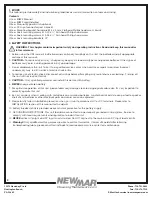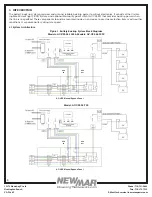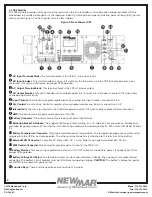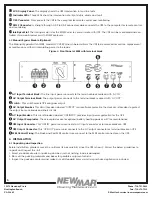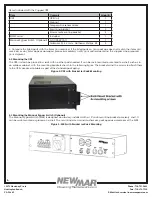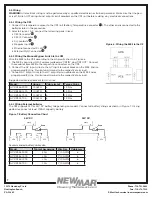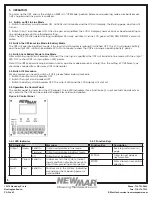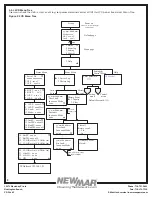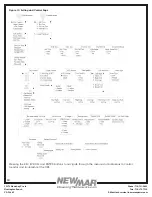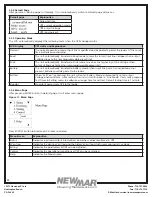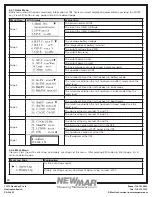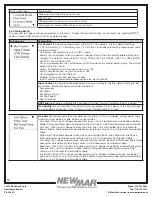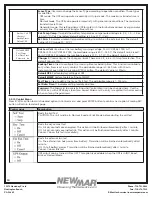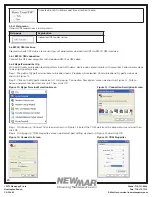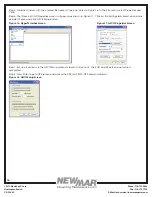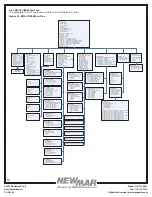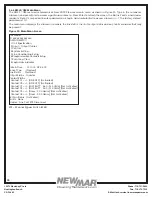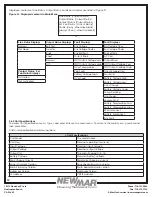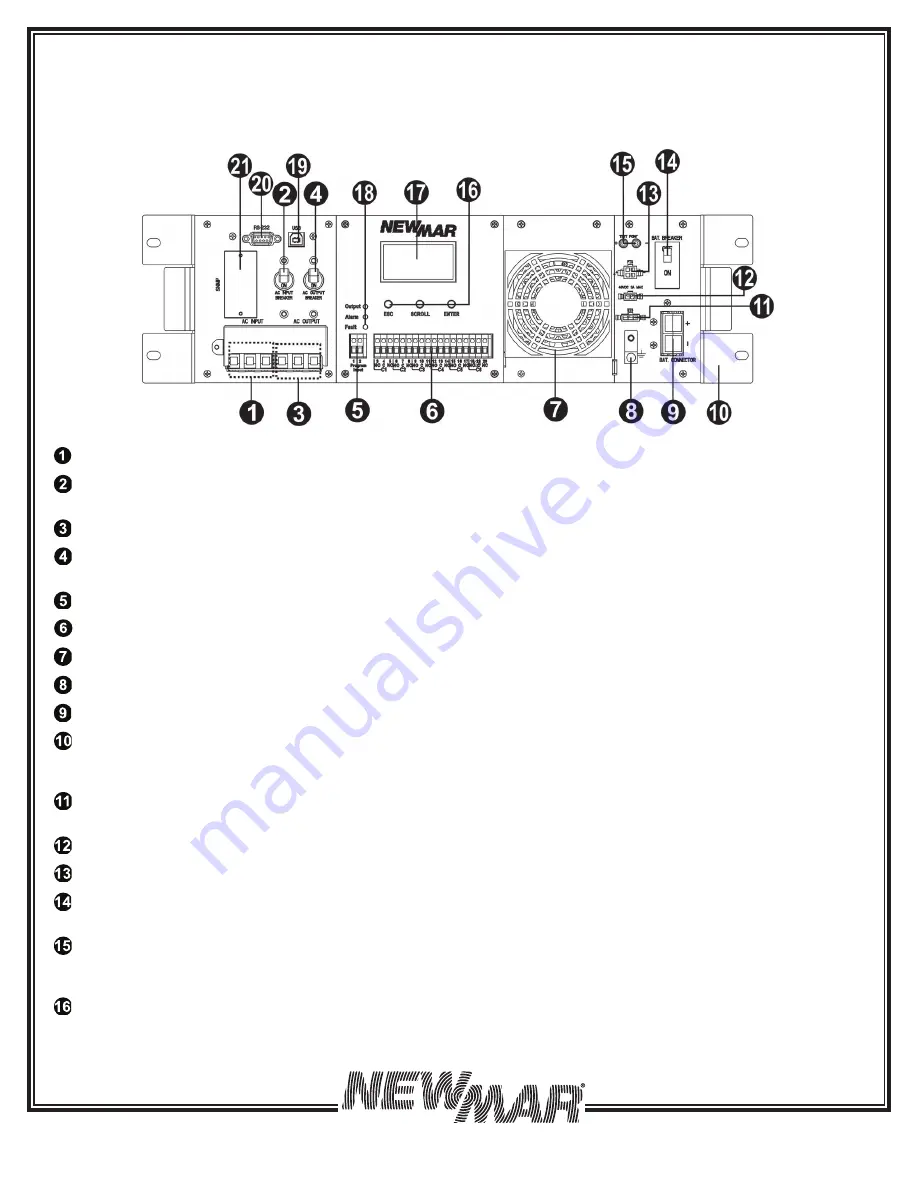
4
15272 Newsboy Circle
Huntington Beach,
CA 92649
Phone: 714-751-0488
Fax: 714-372-7930
E-Mail: [email protected]
PoweringTheNetwork.com
3.2 UPS Module
The UPS module provides utility power to the load when the line is qualified. An automatic voltage regulator (AVR) is
embedded to provide stable power to the load and instantly switches to emergency backup power during utility power
failure or interruption. The front panel view is shown below.
Figure 2: Front Panel of UPS
AC Input Terminal Block:
This terminal block is the UPS AC line power input.
AC Input Breaker:
This circuit breaker is an on/off switch for the line power into the UPS that also provides input
protection. It must be switched on for proper UPS operation.
AC Output Terminal Block:
This terminal block is the UPS AC power output.
AC Output Breaker:
This circuit breaker is a resettable protective thermal circuit breaker to protect UPS output from
overload and short circuits.
Input Contact:
To activate a programmable alarm by shorting this input contact, see section 5.5.9.
Dry Contact:
Six sets of dry contacts energize when a programmable event occurs, see section 5.5.9.
Internal Fan:
The fan is to cool down the inside temperature of the UPS and is easily replaced for maintenance.
GND:
This connector is the permanent ground of the UPS.
Battery Connector:
The battery connector is to connect external batteries.
Mounting Bracket & Handle:
The Rugged UPS Series is for mounting in a 19’’ cabinet. For convenience, handles are
provided for people frequently moving the unit. Mounting hardware includes (quantity 8): M4 x 3mm Flat Head, Phillips,
S.S.
Battery Temperature Connector:
This probe monitors battery temperature. The temperature probe connector must be
plugged into the UPS for normal operation. The other end should be firmly attached to the terminal of the battery.
External FAN Connector:
To provide DC Power (48V DC, 3 Amp Max) to an optional cabinet 48V DC fan.
MBS Control Connector:
This connector provides power to control the MBS unit.
Battery Breaker:
This over-current protection acts as an ON/OFF switch for the battery power. It needs to be ON for
proper UPS operation.
Battery Voltage Test Points:
The test points allow you to measure battery voltage. They accept 2 mm diameter test
probe tips. The battery circuit breaker must be ON before measuring voltage.
CAUTION:
The battery voltage test points
are NEVER to be used as a power outlet.
Function Keys:
These buttons operate and control the LCD panel.


